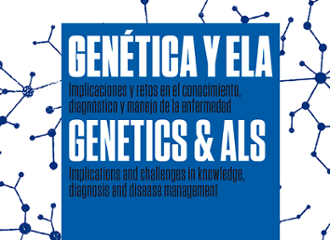Research projects
Start of main content
New (multi-)printable materials for the development of sustainable and biocompatible reactive patches in biomedical applications (ZymoMat)
22st national competition for scientific and technical research
New materials: fundamentals and applications
Senior Researcher : Ana Beloqui
Abstract
ZymoMat is an ambitious project that aims to develop and understand an entirely new family of reactive materials—those that “respond” to external stimuli. The project focuses on the development of an emerging technology, based on eutectic gel mixtures, known as eutectogels, combined with one of the most powerful biological machines that nature provides us: enzymes. Thus, ZymoMat presents an innovative class of hybrid soft materials, called "eutectozymes." ZymoMat hypothesizes that eutectogels, as soft and malleable materials, will accommodate enzymes without sacrificing their catalytic performance. These eco-friendly and sustainable materials could potentially surpass traditional hydrogels and open up new possibilities for their combination with functional proteins. As with any nascent topic, the development of novel materials requires fundamental study to fully understand the physicochemical phenomena underlying the synergistic relationship between enzymes and eutectic solvents. Here, molecular dynamics simulations will be combined with experimental evidence to understand eutectic solvent/enzyme interactions from a fundamental level, enabling the design of hybrid materials with tailored properties. Beyond the fundamentals, considering the broad potential impact of eutectozymes, the project will also explore their application in the biomedical field. ZymoMat aims to design eutectogels to host alkaline phosphatases that can guide the biomineralization process, which could result in hierarchically organized structures promising for bone tissue engineering. Additionally, additive manufacturing techniques, such as multi-material 3D laser printing, will be investigated to create complex, customized platforms for the biomineralization process and the fabrication of therapeutic patches for wound healing. Special emphasis will be placed on how eutectic solvents can enhance the performance of enzymes in these multifunctional materials.
-
 Activities related
Activities related
-
 Projects related
Projects related
-
 News related
News related
-
 Publications related
Publications related
 Activities related
Activities related
-
26
Jun
2024
Conferencias La aventura de la ciencia Madrid, Miércoles 26 de junio de 2024, 19:00 horas
-
13
Feb
2025
17th edition. Cycle of conferences and debates in science Digital Twins: Technological Advances and Application Opportunities Madrid, Thursday, 13 February 2025, 17:30 hours
-
18
Feb
2025
Session New Therapies for the Inflammation Treatment Madrid, Feb 18th, 2025, Tuesday. 4PM
 Projects related
Projects related
- Development and Application of saRNAs for the Treatment of Rare Monogenic Diseases 2024 Senior Researcher : María Luisa Cayuela Fuentes
- CHANNELOSOME RESCUING PEPTIDES IN THE TREATMENT OF ARRHYTHMIAS IN INHERITABLE HEART DISEASES 2024 Senior Researcher : José Jalife Research Centre or Institution : Centro Nacional de Investigaciones Cardiovasculares (CNIC). Madrid
- Mechanisms for sustaining mitochondrial genome integrity and function during hematopoiesis. 2024 Senior Researcher : Ana Victoria Lechuga Vieco Research Centre or Institution : Fundació Clínic per a la Recerca Biomèdica. Hospital Clínic. Barcelona
 News related
News related
 Publications related
Publications related


End of main content



